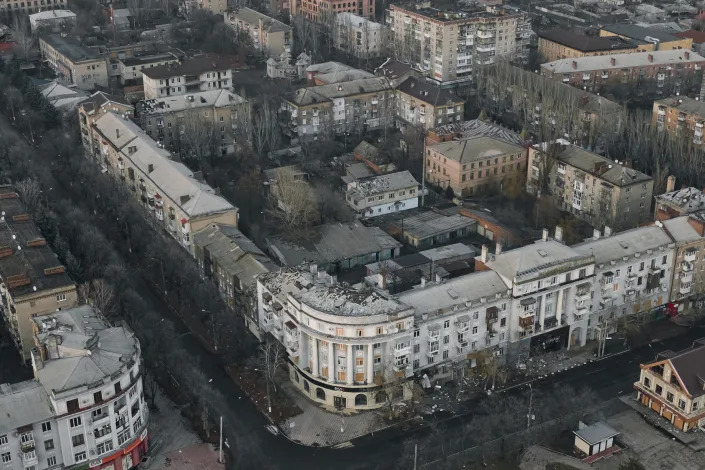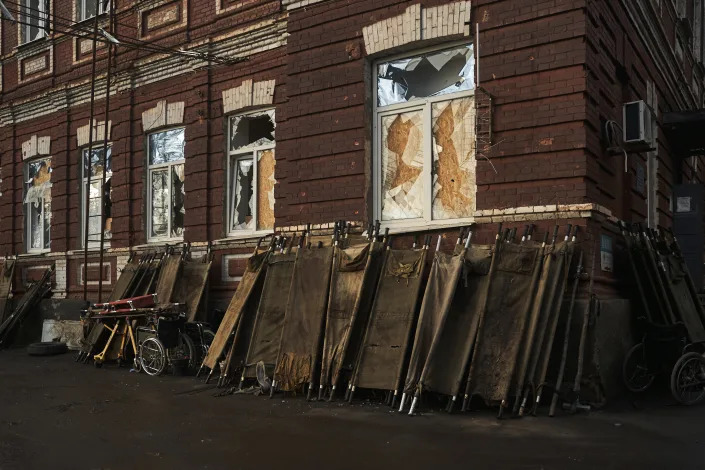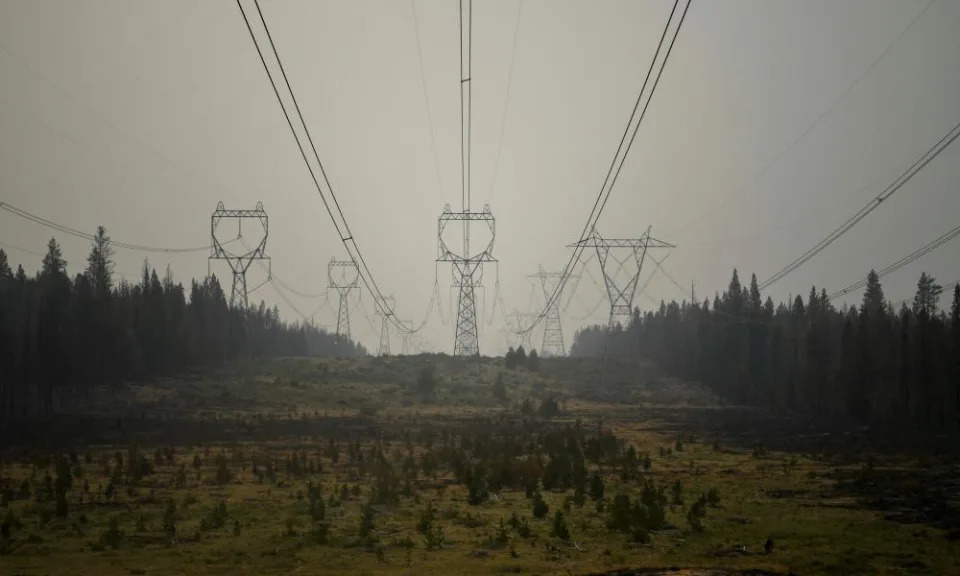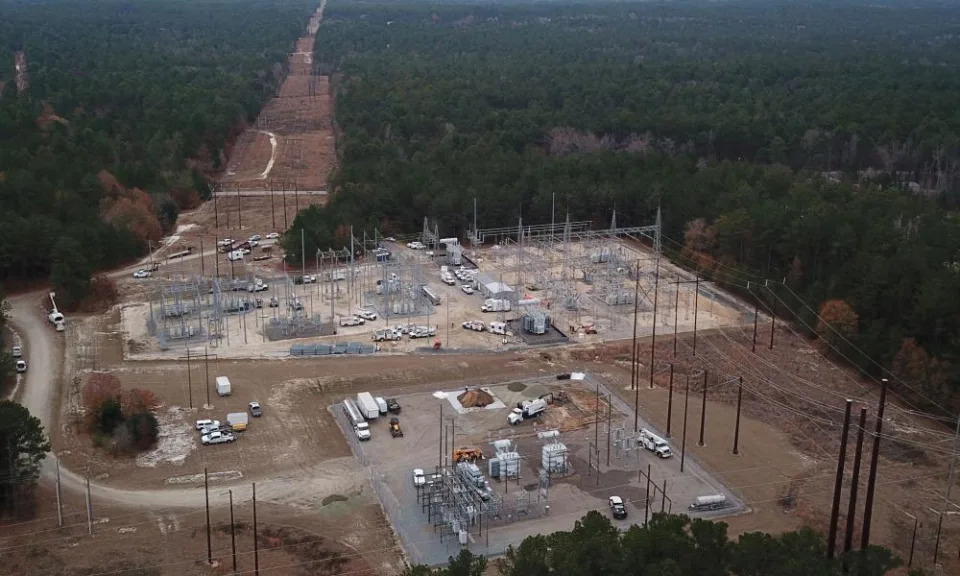Associated Press
Russia grinds on in eastern Ukraine; Bakhmut ‘destroyed’
Jamey Keaten – December 10, 2022



KYIV, Ukraine (AP) — Russian forces have turned the eastern Ukrainian city of Bakhmut into ruins, President Volodymyr Zelenskyy said, while Ukraine’s military on Saturday reported missile, rocket and air strikes in multiple parts of the country that Moscow is trying to conquer after months of resistance.
The latest battles of Russia’s 9 1/2 month war in Ukraine have centered on four provinces that Russian President Vladimir Putin triumphantly — and illegally — claimed to have annexed in late September. The fighting indicates Russia’s struggle to establish control of those regions and Ukraine’s persistence to reclaim them.
Zelenskyy said the situation “remains very difficult” in several frontline cities in eastern Ukraine’s Donetsk and Luhansk provinces. Together, the provinces make up the Donbas, an expansive industrial region bordering Russia that Putin identified as a focus from the war’s outset and where Moscow-backed separatists have fought since 2014.
“Bakhmut, Soledar, Maryinka, Kreminna. For a long time, there is no living place left on the land of these areas that have not been damaged by shells and fire,” Zelenskyy said in his nightly video address, naming cities that have again found themselves in the crosshairs. “The occupiers actually destroyed Bakhmut, another Donbas city that the Russian army turned into burnt ruins.”
Some buildings remain standing in Bakhmut, and the remaining residents still mill about the streets. But like Mariupol and other contested cities, it endured a long siege and spent weeks without water and power even before Moscow launched massive strikes to take out public utilities across Ukraine.
The Donetsk region’s governor, Pavlo Kyrylenko, estimated seven weeks ago that 90% of the city’s prewar population of over 70,000 had fled in the months since Moscow focused on seizing the entire Donbas.
The Ukrainian military General Staff reported missile attacks, about 20 airstrikes and more than 60 rocket attacks across Ukraine between Friday and Saturday. Spokesperson Oleksandr Shtupun said the most active fighting was in the Bakhmut district, where more than 20 populated places came under fire. He said Ukrainian forces repelled Russian attacks in Donetsk and neighboring Luhansk.
Russia’s grinding eastern offensive succeeded in capturing almost all of Luhansk during the summer. Donetsk eluded the same fate, and the Russian military in recent weeks has poured manpower and resources around Bakhmut in an attempt to encircle the city, analysts and Ukrainian officials have said.
After Ukrainian forces recaptured the southern city of Kherson nearly a month ago, the battle heated up around Bakhmut, demonstrating Putin’s desire for visible gains following weeks of clear setbacks in Ukraine.
Taking Bakhmut would rupture Ukraine’s supply lines and open a route for Russian forces to press on toward Kramatorsk and Sloviansk, key Ukrainian strongholds in Donetsk. Russia has battered Bakhmut with rockets for more than half of the year. A ground assault accelerated after its troops forced the Ukrainians to withdraw from Luhansk in July.
But some analysts have questioned Russia’s strategic logic in the relentless pursuit to take Bakhmut and surrounding areas that also came under intense shelling in the past weeks, and where Ukrainian officials reported that some residents were living in damp basements.
“The costs associated with six months of brutal, grinding, and attrition-based combat around #Bakhmut far outweigh any operational advantage that the #Russians can obtain from taking Bakhmut,” the Institute for the Study of War, a think tank in Washington, posted on its Twitter feed on Thursday.
The Russian Defense Ministry said Saturday that Russian troops also pressed their Donbas offensive in the direction of the Donetsk city of Lyman, which is 65 kilometers (40 miles) north of Bakhmut. According to the ministry, they “managed to take more advantageous positions for further advancement.”
Russia’s forces first occupied the city in May but withdrew in early October. Ukrainian authorities said at the time they found mines on the bodies of dead Russian soldiers that were set to explode when someone tried to clear the corpses, as well as the bodies of civilian residents killed by shelling or who had died from a lack of food and medicine.
On Friday, Putin lashed out at recent comments by former German Chancellor Angela Merkel, who said a 2015 peace deal for eastern Ukraine negotiated by France and Germany had bought time for Ukraine to prepare for war with Russia this year.
That deal was aimed to cool tensions after pro-Russia separatists seized territory in the Donbas a year earlier, sparking a war with Ukrainian forces that ballooned into a war with Russia itself after the Feb. 24 full-scale invasion.
Ukraine’s military on Saturday also reported strikes in other provinces: Kharkiv and Sumy in the northeast, central Ukraine’s Dnipropetrovsk, Zaporizhzhia in the southeast and Kherson in the south. The latter two, along with Donetsk and Luhansk, are the four regions Putin claims are now Russian territory.
A month ago, Russian troops withdrew from the western side of the Dniper River where it cuts through Kherson province, allowing Ukrainians forces to declare the region’s capital city liberated. But the Russians still occupy a majority of the province and have continued to attack from their news positions across the river.
Writing on Telegram, the deputy head of Zelenskyy’s office, Kyrylo Tymoshenko, said two civilians died and another eight were wounded during dozens of mortar, rocket and artillery attacks over the previous day. Residential areas, a hospital, shops, warehouses and critical infrastructure in the Kherson region were damaged, he said.
To the west, drone attacks overnight left much of Odesa province, including its namesake Black Sea port city, without electricity, regional Gov. Maxim Marchenko said. Several energy facilities were destroyed at once, leaving all customers except hospitals, maternity homes, boiler plants and pumping stations were without power, electric company DTEK said Saturday.
The Odesa regional administration’s energy department said late Saturday that fully restoring electricity could take as long as three months and it urged families whose homes are without power to leave the region if possible.















